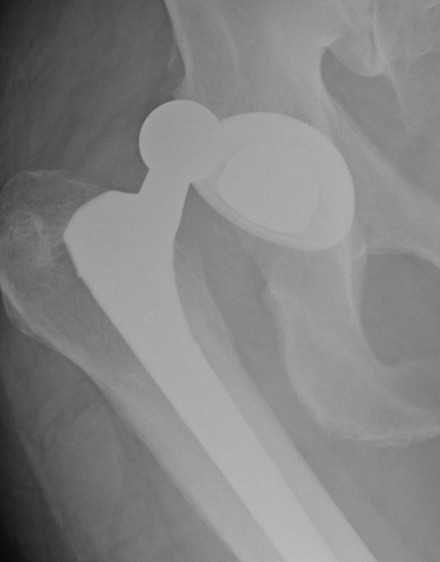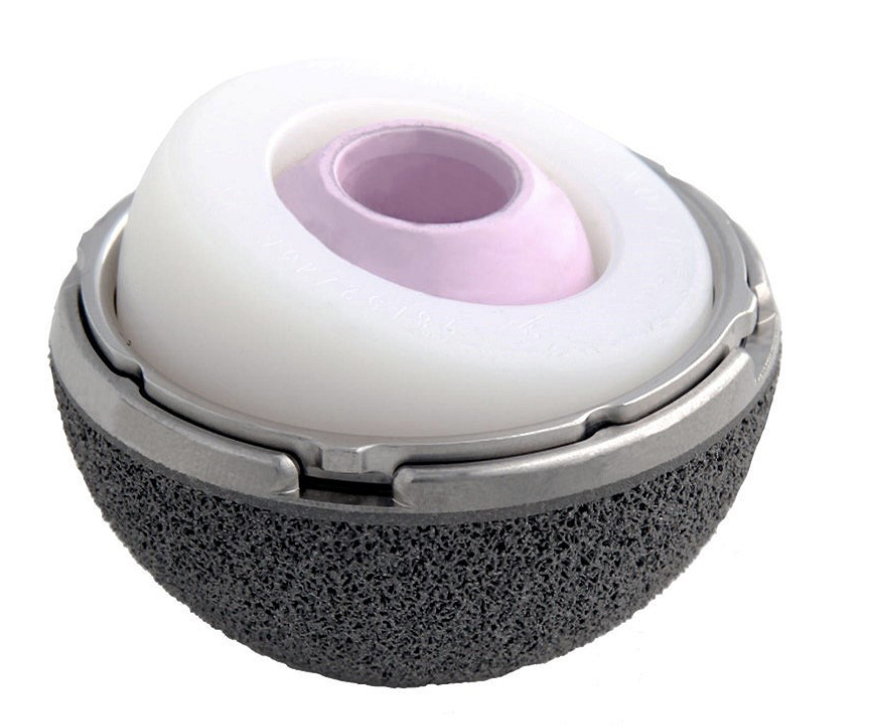
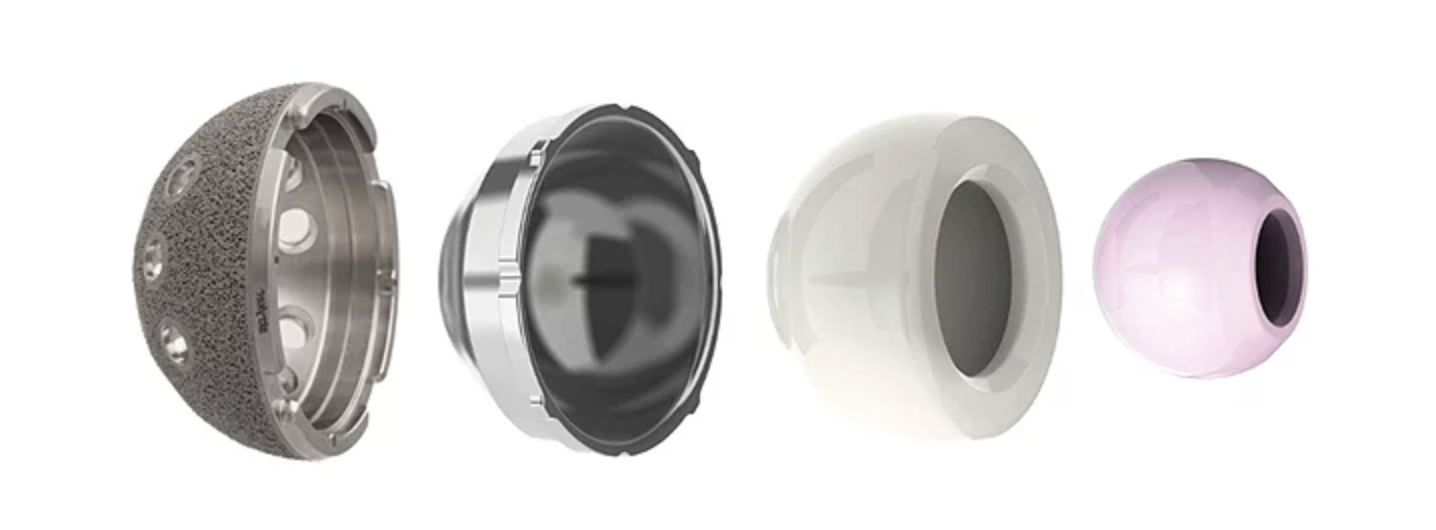
Stryker dual mobility
Concept
Femoral head moves within a poly component, which moves within the fixed acetabulum
- primary motion occurs at the inner bearing
- outer bearing moves in cases of extreme range of motion
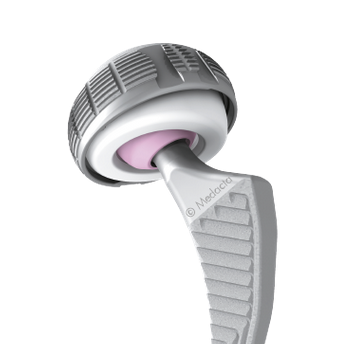
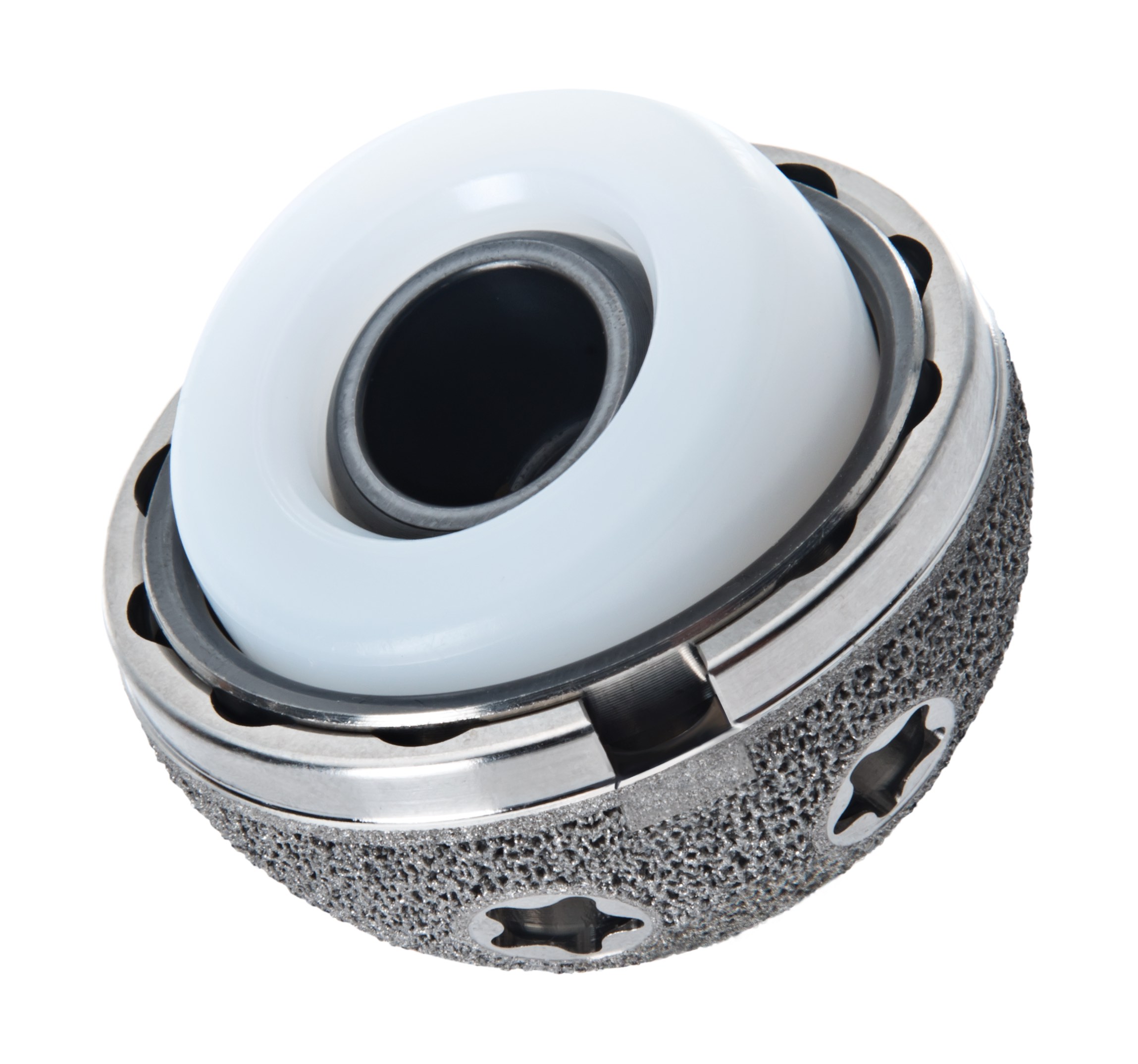
Advantage
May reduce dislocation rates
- ? indicated in high risk situations
- i.e femoral neck fracture, revision
Issues
Wear rates
Intra-prosthetic dislocation
Dislocation
Primary THA
Romagnoli et al Int Orthop 2019
- systematic review of 15 studies and 2400 patients
- comparison of dual mobility with standard THA
- reduced risk of dislocation with dual mobility
Neck of femur fracture
- meta-analysis of 4 studies
- risk of dislocation with dual mobility lower than conventional THA
- risk of dislocation with dual mobility comparable to hemiarthroplasty
Revision THA
- systematic review in revision setting
- some evidence for decreased dislocation rates and reduced loosing with dual mobility
Revision rates
Australian Joint Registry 2023 all cause revision rates
| Standard acetabulum | Dual Mobility | |
|---|---|---|
| 1 year | 1.7 | 2.0 |
| 3 years | 2.5 | 2.8 |
| 5 years | 3.1 | 3.5 |
| 10 years | 4.6 | 5.6 |
Higher revision rate overall
Equal revision rates in OA
Lower revision rate for infection
Intra-prosthetic dislocation
- 1453 DM hips at single institution
- intraprostatic dislocation in 0.76%
Mechanism
Retention of the liner
Dislocation of the femoral head
Closed reduction
- 54 dual mobility dislocations
- 44 large head dislocations, 10 intra-prosthetic dissociations
- 63% of closed reductions in ED failed
- can convert large head dislocation to intra-prothetic dissociation
- recommend perform in OR, ready to move to open revision
Management
- registry of 5000 dual mobility THA
- 3% incidence of intra-prosthetic dislocation
- mean of 18 years post THA
- more common in young men
- typically associated with poly wear
- majority (91%) treated with mobile bearing replacement
- 9% required acetabular revision for loosening

